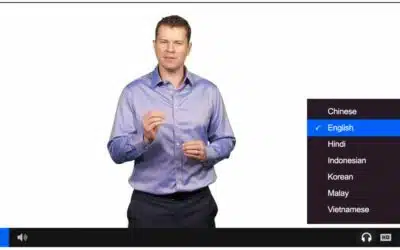5 questions you need to ask when implementing live streaming into your charity marketing plan. Jake Ward, Business Development Director at Groovy Gecko, the UK’s leading live streaming expert, offers advice on live-streamed fundraising.
why live streaming?
Taking part in a live, online event makes people feel involved, engaged, informed, and compelled to donate. It’s very difficult to attract visits to a charity’s page, especially from new supporters, and so pushing out regular live content and events is a great way to spread the word about your charity on social platforms. Most people are also more trusting of existing, established outlets such as social media platforms.
There are two different forms of streamed fundraising campaigns and it’s important to plan the content and the platform appropriately. The first is direct fundraising, which may include a donate button or a link to a fundraising page. The second is about raising awareness and increasing engagement, which is equally important as it contributes to your wider fundraising activity. Successful charity fundraisers carry out a combination of the two. For example Cancer Research UK’s streamed events to continue to remind supporters of their work while also consistently engaging the charity’s community throughout the pandemic.
how can I get involved as a smaller charity?
We find that the more authentic the live stream is, as opposed to polished, pre-recorded content, the more you will connect with your ambassadors and attract new supporters. This means any charity of any size could and should integrate live content into their fundraising and marketing campaigns. It could be as simple as using your mobile to keep people updated on how the charity is doing or what you’re planning. It’s important to remind your supporters that you’re still there. It might only be 100 or so people that you’re talking to at one time, but they could be 100 valuable, regular supporters.
Be honest. Tell your community what you’re up against, what you need, and how you’re getting by. Online fundraising is here to stay throughout the pandemic and beyond, so it’s important to utilise these live tools as a valuable revenue channel. Start small. Some of it will be trial and error so don’t be afraid to test different things, perhaps starting with a five-minute live Q&A.
Where and how can I get the most traction with live streaming?
There is no one-size-fits-all approach and you may want to try a little of everything to discover which platform and which content is most successful for your charity. It’s best to start with where your strongest following is on social media.
Distribution is also very important. Choose the platform and the content that you feel will be the easiest to share. Build momentum by promoting the livestream ahead of time, allowing your followers to schedule it into their diary as well as sharing it with their friends and family.
What’s the best kind of content?
We have found with Cancer Research UK that the success of the live events has also depended on where we are in the pandemic and how it’s affecting people’s lives. So it’s vital to consider the tone of your content and how it complements the needs of your audience at the time.
Consider the demographic that you’re looking to attract. Which platform and what content is most relevant to them? Remember there should be a reason for people to want to join live: Will there be a live Q&A? Will they have time in their working day to get involved? Is it launching something new and exciting that they’ll want to see in real time?
How can I get more supporters through live streams?
Partnering with other relevant organisations and ambassadors is a great way to reach a new audience as well as mixing up the content. Talk to your local press or MP about getting involved or join forces with another charity. Don’t be afraid to ask influencers if they’d like to support you. All of these partners can feature the live on their social pages bringing a bigger audience to your live.
Think of live streaming as a regular event rather than a one-off as that’s how they’ll build momentum. Try to time them with your audience in mind. It could be a regular weekly coffee break or Friday evening entertainment. The more consistently you do them, the more word-of-mouth has the opportunity to spread.



